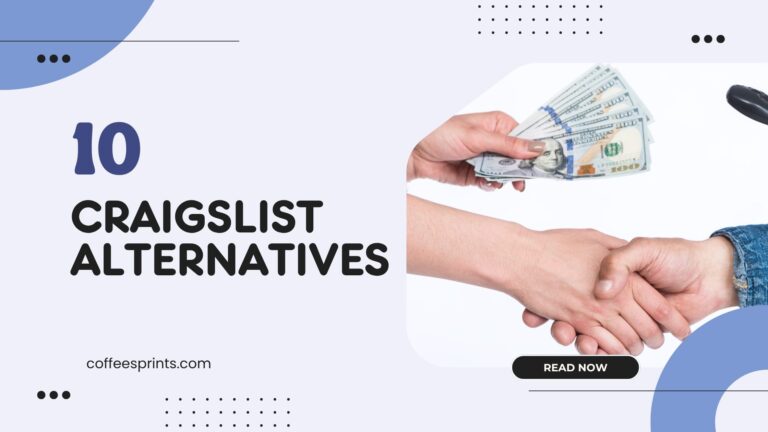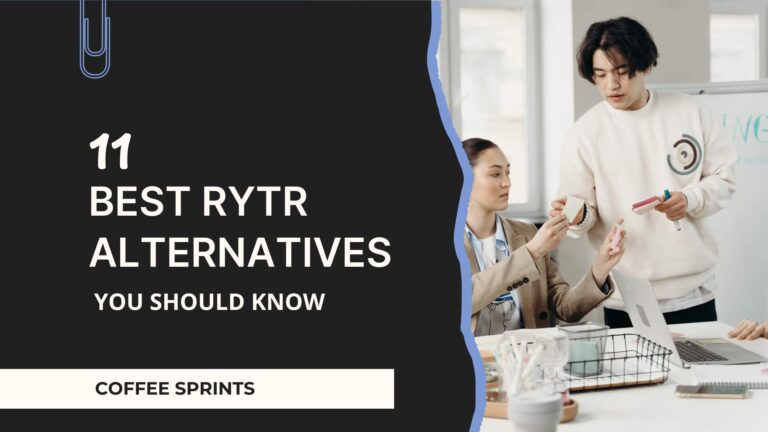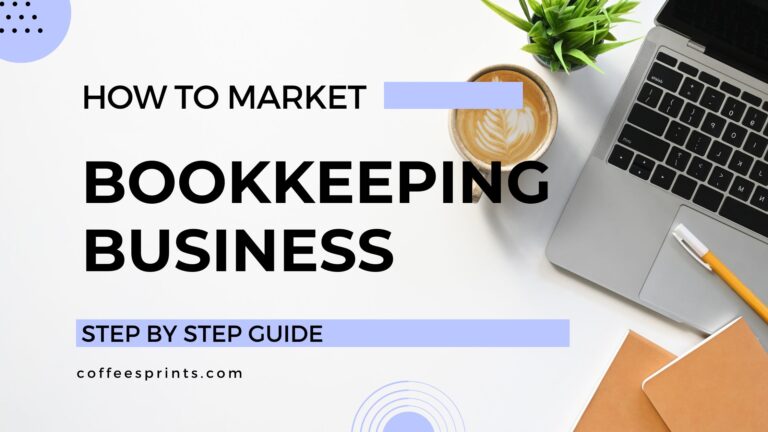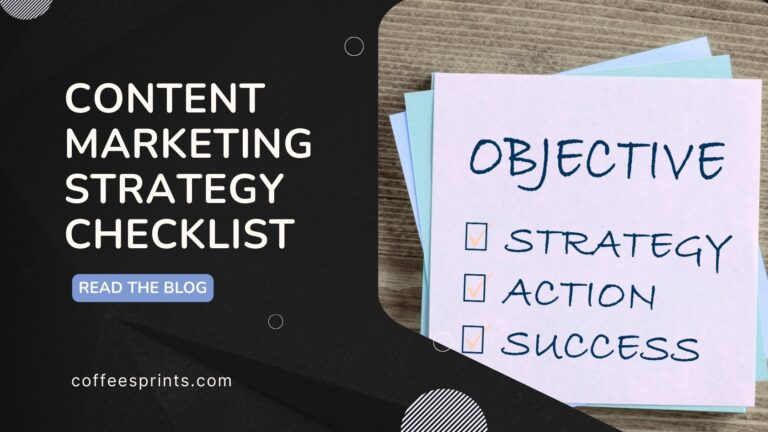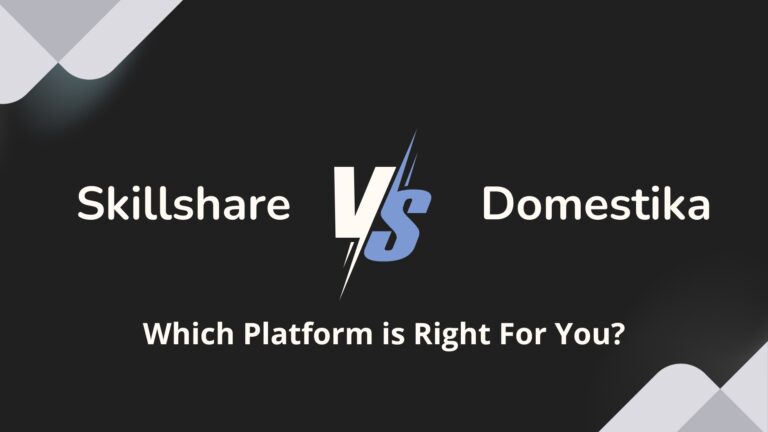Pinterest vs. Instagram for Your Business: Where Should You Show Up?
Choosing between Pinterest and Instagram can be tricky.
The truth is.. Both are visual platforms, but they serve different purposes for your audience and your business.
One platform has you planning your dream kitchen renovation, while the other shows you what your friend had for breakfast.
If you’re trying to decide where to invest your limited time and energy, you’re asking the right question.
Choosing the right platform could transform how people discover and buy from your business.
Let’s understand the differences between Pinterest and Instagram so you can make a strategic decision rather than just following what everyone else seems to be doing.
A Quick Comparison of Pinterest Vs. Instagram
I’ve added all the key features and use cases of both Pinterest and Instagram in a table for your quick reference.
| Factor | ||
| Best for Business Types | E-commerce, blogs, service providers with visual processes, B2C lifestyle brands | Personal brands, restaurants, fashion, beauty, coaching, local businesses |
| Primary User Intent | Planning, shopping, problem-solving | Entertainment, connection, inspiration |
| Content Lifespan | Months to years (evergreen) | Higher daily engagement, consistent posting, batch content |
| Traffic Generation | Excellent – direct clicks to your website | Strong via Meta Ads and Shopping features |
| Time Investment | Lower daily maintenance, batch content creation | Higher daily engagement, consistent posting, batch content |
| Audience Behavior | Ready to buy, researching solutions | Browsing, socializing, following trends |
| Search Functionality | Powerful visual search engine | Limited hashtag and account search |
| Content Focus | Educational, aspirational, solution-oriented | Behind-the-scenes, personal, community-focused |
| ROI Timeline | 3-6 months for momentum | Higher daily engagement, consistent posting, and batch content |
Pinterest: A Visual Search Engine, Not Social Media
Here’s something most business owners get wrong about Pinterest: it’s not a social media platform. It’s a visual search engine that happens to have some social features. When you understand this fundamental difference, everything about Pinterest marketing starts to make sense.
Think about how you use Google. You have a problem or goal, you search for a solution, and you click on the most helpful-looking result. Pinterest works the same way, except instead of text-based searches, people are searching with images and visual inspiration.
Your potential customers aren’t on Pinterest to see what their friends are up to. They’re there with inspiration or purchase intent. They’re planning a wedding, redecorating their living room, looking for meal prep ideas, or researching their next business investment. They’re in research mode, which means they’re much closer to making a buying decision than on traditional social media.
This search-driven behavior creates unique opportunities for your business. When someone saves your pin to their board, they’re essentially bookmarking your solution for later. Unlike a quick Instagram like that’s forgotten in minutes, a Pinterest save represents genuine interest in what you’re offering.
Instead of prioritizing recent content, Pinterest shows users the most relevant and helpful content, regardless of when it was posted. This means a pin you create today could still be driving traffic to your website two years from now, something impossible on Instagram. I still drive traffic from the pins I created a year ago.
For example, when someone searches for “small bathroom renovation ideas” or “productivity planner templates,” they’re not just browsing; they’re actively looking for solutions to implement. If your business provides those solutions, Pinterest puts you directly in front of people ready to buy.
Suggested Read: 10 Pinterest Alternatives
Instagram: Community, Personality & Short-Lived Content
Instagram operates on completely different principles. It’s built around relationships, personality, and real-time connection, but it has evolved significantly into a powerful commerce platform. When people open Instagram, they’re looking to be entertained, inspired by people they follow, and increasingly, to discover and buy products directly through the app.
Instagram’s shopping features have become seamless, making it easy for users to discover and purchase products without leaving the platform. Meta’s Advantage Plus Shopping represents a fully automated solution for e-commerce businesses, using dedicated algorithms that require minimal input from advertisers.
The platform now excels at converting browsers into buyers through sophisticated ad targeting and in-app shopping experiences. Shopping Ads direct users to product pages for seamless purchasing, while Collaborative Ads allow brands and retailers to work together on targeted campaigns with dynamic product feeds that update in real time.
This platform rewards consistency, personality, and authenticity over evergreen value, but now pairs that with advanced commerce capabilities. Your audience wants to see behind the scenes of your business, get to know you as a person, and feel like they’re part of your journey, while also being able to buy from you instantly when inspiration strikes.
The engagement on Instagram is immediate but fleeting. A post might get hundreds of likes and comments within hours, creating a dopamine rush that feels like business success. However, that same post will be virtually invisible in most people’s feeds within a day or two. Instagram’s algorithm prioritizes fresh content, meaning you need to constantly create new material to maintain visibility.
While Instagram historically kept users on the platform, Meta has pivoted significantly toward commerce integration. The platform now actively supports driving sales through Shopping Ads, product tags, and streamlined checkout processes. Platforms like Instagram are enhancing in-app shopping features, making it seamless for users to discover and purchase products directly within the app.
The platform works best for businesses where the personality behind the brand matters. If your customers buy from you because they trust you, like your approach, or want to support you personally, Instagram’s relationship-focused environment is invaluable. It’s where you build the know-like-trust factor that turns followers into customers over time.
However, Instagram requires significant daily attention. Responding to comments, engaging with other accounts, posting regularly, and staying current with trends and features demands consistent time investment. Unlike Pinterest, where you can batch create content and step away, Instagram rewards active, ongoing participation in the community.
Comparing Pinterest Vs. Instagram: Features & Use Cases
Let’s look at different use cases for both Instagram and Pinterest to understand how you can leverage them for your business.
Founder vs Brand Persona: Which Platform Fits Your Business Style?
Your choice between Pinterest and Instagram should align with how your audience wants to interact with your brand.
If your business is led by personal story or founder-driven content, expertise, or unique approach, Instagram’s personality-driven environment serves you well. Your audience wants to see your face, hear your voice, and feel connected to you as an individual.
Pinterest works better when your business value lies in your solutions, products, or systems rather than your personality. Your audience cares more about the results you provide than your personal journey. This doesn’t mean Pinterest businesses can’t have personality; it means the personality serves the solution rather than being the main attraction.
A post shared by 𝐊𝐚𝐭𝐞 𝐑𝐨𝐰𝐞-𝐇𝐚𝐦 – Menopause Fitness Coach (@katerh_fitness)
Source: Instagram
For example, we can look at a fitness coach versus a meal planning service. The fitness coach’s Instagram success comes from sharing their transformation story, daily workouts, and motivational content that builds a personal connection.

Source: Pinterest
The meal planning service succeeds on Pinterest by creating beautiful, searchable images of healthy meals that solve specific problems like “quick weeknight dinners” or “meal prep for families.”
Traffic, Leads & Engagement: Visibility vs Connection
This is a great deal for businesses, big and small.
Pinterest is great if you’re looking for high-quality traffic to your site. You can link each pin directly to your blog, product, or service page. People use Pinterest with intent. They’re already searching for something, find your pin, and click through because they’re actually interested. That kind of traffic is more likely to convert; it’s not random scrolling, it’s purposeful.
Instagram, on the other hand, is more about building relationships. You get engagement — DMs, comments, story replies, but the journey from post to sale is longer. It’s not built for link clicks, so you’re working to stay visible, stay top-of-mind, and slowly build trust. Sales here usually come after people feel connected to you or your brand, not just from a single post.
Also worth knowing: Instagram wants people to stay on the app. That’s great for visibility on Instagram, but it makes it harder to get folks over to your website or email list — the places where conversions actually happen.
Time Investment: Evergreen Pins vs Daily Instagram Stories
Pinterest allows for batch content creation and strategic planning. You can spend a few hours creating a month’s worth of pins, schedule them, and focus on other aspects of your business. The evergreen nature of pins means your time investment compounds, and each pin can continue driving traffic for months or years.
Your Pinterest strategy can be more systematic and less reactive. You’re creating content based on keyword research and seasonal trends rather than responding to daily conversations or trending topics. This makes Pinterest more predictable and manageable for business owners who prefer structured marketing approaches.
Instagram demands consistent daily attention. Stories expire in 24 hours, so you need fresh content daily to maintain visibility. Engaging with your community through comments and DMs is essential for algorithm performance and relationship building. Even if you batch create posts, you still need to be present daily for optimal results.
The Instagram algorithm rewards active, engaged accounts. Posting regularly, responding quickly to comments, and engaging with other accounts all boost your visibility. This can be fulfilling if you enjoy social interaction, but it’s challenging if you prefer to focus on other business activities.
Content Formats That Work on Pinterest vs Instagram
Pinterest success comes from creating pins that answer specific questions or solve particular problems. Your content should be searchable, valuable, and actionable. Think infographics, step-by-step tutorials, before-and-after transformations, and inspirational quotes with clear takeaways.
The best Pinterest content often includes text overlay on images, making pins informative at a glance. Your pins should make sense without reading the description, though good descriptions help with search visibility. Templates, checklists, and guides perform exceptionally well because they provide immediate value.
Instagram favors authentic, in-the-moment content. Behind-the-scenes videos, personal stories, quick tips, and community conversations perform better than overly polished content. Instagram users want to feel like they’re getting exclusive access to your business journey.
Instagram Stories and Reels give you room to play. You don’t need polished visuals or perfect captions — just quick, casual content that feels real. You can try out ideas, hop on trends, or share behind-the-scenes moments without overthinking. It’s a low-pressure way to stay visible and show up consistently, even when you don’t have time (or energy) for a full-on feed post.
When to Choose Both Instagram and Pinterest
Some businesses benefit from using both platforms strategically, but this only works if you have clear, different purposes for each platform and enough resources to manage both effectively.
The most successful dual-platform approach uses Instagram for community building and brand awareness while Pinterest drives traffic and sales. Your Instagram content focuses on behind-the-scenes content, customer stories, and building relationships. Your Pinterest content focuses on providing solutions and driving people to your website.
For example, an interior designer might use Instagram to show project progress, share client testimonials, and build personal brand recognition. The same designer uses Pinterest to share finished room photos, design tips, and inspiration boards that drive traffic to their portfolio and inquiry form.
However, attempting both platforms without sufficient resources often results in mediocre performance on both. You’re better off excelling on one platform than struggling to maintain presence on two. Consider your available time, team capacity, and business goals before committing to multiple platforms.
If you do choose both, ensure your content strategy is specific to each platform rather than simply cross-posting the same content. Pinterest content should be optimized for search and long-term value. Instagram content should be optimized for immediate engagement and relationship building.
How Coffee Sprints Can Help You Choose or Use Both Strategically
Not sure where your energy should go, pins or posts? You don’t have to guess. At Coffee Sprints, we help small businesses and creative brands like yours figure out where your ideal customers are and how to reach them.
Whether you’re considering Pinterest for evergreen traffic or Instagram for daily engagement, we can help you build a plan that fits your goals, your bandwidth, and your audience. From quick audits to full-blown content strategies, we’re here to make your marketing easier..
Curious what that could look like for you? Start with a free mini audit or book a Coffee Sprint to get clarity and momentum.
Conclusion
Keep in mind it’s not about choosing the “better” platform, but the one that aligns with how your business works and how your customers shop, search, and scroll.
Pinterest is a long game with strong traffic potential. Instagram builds connection and visibility in real time. You can use both, as long as they have a purpose in your bigger picture.
If you’re feeling pulled in too many directions, pause and ask: What’s going to bring measurable value to my business right now? And if you need help answering that, feel free to get in touch.


